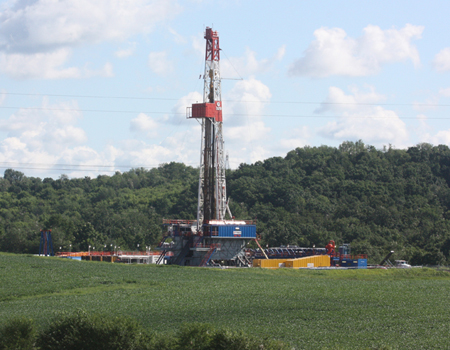Many Want Severance Tax Funds to Come Back to Affected Communities
Thursday, February 13, 2014

SALEM, Ohio — A third plan for the proposed severance tax may be on its way to the Ohio Statehouse.
Gov. John Kasich proposed the initial severance tax plan in December 2012, but it met with only lukewarm support from lawmakers.
A second plan was proposed in December 2013 in the Ohio House of Representatives, however, lawmakers are now working to make changes to it as part of a third plan.
State Sen. Joe Schiavoni, D-33, said Ohio House Bill 375, which was proposed in early December does not go far enough in giving back to the communities impacted most by shale drilling. He is hoping the bill can be amended in the next couple of weeks, and possibly be part of the mid-biennial budget Gov. John Kasich will sign in March.
“Let’s craft something that’s a win-win for everybody,” he said.
As introduced, the bill “levies a new severance tax on oil and natural gas severed through use of a horizontal well, to be paid by the owner of that well or the severer on the basis of the owner’s net proceeds from selling that oil or natural gas.”
The money would fund income tax reductions, and allocates the remainder to oil and gas regulatory and geological survey activities of the Ohio Department of Natural Resources.
Other states
Schiavoni said the proposed tax is not comparable to other oil and gas producing states in the United States. For example, the severance tax collected in Texas is 24 percent; in North Dakota, it is 5 percent; and Michigan collects a 6 percent tax.
The proposed Ohio House bill calls for a 1 percent tax for the first five years and after five years, the tax increases to 2 percent.
However, if a well’s production of oil does not exceed 17 barrels per day in a calendar quarter, then the rate on that oil becomes 1% of the owner’s net proceeds from selling the oil.
Similarly, if the well’s production of natural gas does not exceed 100 MCF per day in a calendar quarter, then the rate on that natural gas becomes 1% of the owner’s net proceeds.
Local governments
Schiavoni said he thinks the tax should be a higher percentage so some money can be returned to local governments and townships, as well as school districts, impacted by the shale industry in Ohio. He said opponents say a higher percentage will deter shale investments, but he doesn’t feel it will do that.
“I think we need to focus on investments in our area and I feel that’s the part lacking in the current House bill,” said Schiavoni.
The current bill calls for part of the money generated to go to the Ohio Department of Natural Resources. The funds would help pay for the regulation services the ODNR provides and for an orphan well plugging program.
Ohio Farm Bureau
The Ohio Farm Bureau is not issuing a position on the bill that was proposed in December.
Brandon Kern, director of state policy at the Ohio Farm Bureau Federation, said the OFBF supports using the severance tax revenue to fund ODNR regulation and the orphan well program. However, the organization’s members also feel the tax should be used for local reinvestments in the areas impacted by shale, and OFBF is encouraging lawmakers to add the local reinvestment portion into the bill.
Kern said OFBF is concerned taxpayers could get double-taxed. Even though existing language in the House bill does not allow it, Kern said the language is not clear and needs edited to ensure taxpayers are safe. He said the
OFBF wants it clear landowners will get credit for the severance taxes they pay on their income taxes.
He said if the local reinvestment portionis added and the language for the taxes is cleaned up, then the farm group will support the bill.
Industry input
Mike Chadsey, director of public relations for the Ohio Oil and Gas Association, said the association wants to ensure ODNR’s gas and oil regulatory program is fully funded first, then it would like the tax monies to go toward finding and plugging orphan and idle wells in Ohio.
“Beyond those two concerns, we will leave it up to the governor and the General Assembly to determine where the rest of the monies will go,” said Chadsey.




